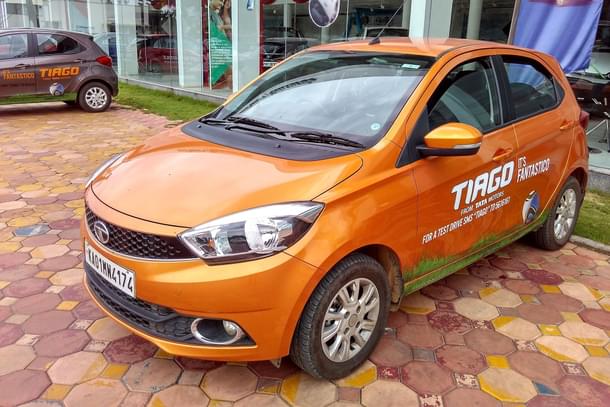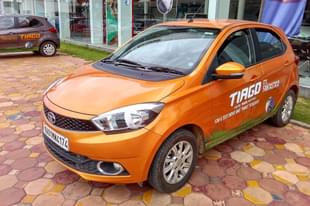Business
Why The Rise Of Tata Cars Matters; It’s Also A Signal To Indian Lawmakers To Incentivise Building Of Safe Cars
Arihant Pawariya
Jan 06, 2021, 06:40 PM | Updated 06:40 PM IST
Save & read from anywhere!
Bookmark stories for easy access on any device or the Swarajya app.


The automobile industry in India forms the backbone of country’s manufacturing sector, comprising 40 per cent of the sector’s share of the Gross Domestic Product. Of this, about half is contributed by the car industry.
Though car ownership has gone up over the last decade and the industry has seen many good years, it has been hit by some major shocks in the last four years like the introduction of goods and services tax and forced transition to BSVI fuel norms directly from the BSIV standard.
The effect of demonetisation and Covid-19 pandemic has also hit it hard.
Amidst all this, one of the impressive developments has been the turnaround of Tata Motors, especially in the car segment.
In 2015, Tata sold around 1,30,000 odd cars and stood at sixth place with market share of 3.5 per cent, behind Maruti, Hyundai, Mahindra and Mahindra, Honda and Toyota.
In 2020, in December alone, it sold 23,500 odd cars, just a few score cars short of its October sales which was the highest since 2012.
In the first half of 2021 Fiscal Year, market share of Tata cars has climbed to 8 per cent.
Given that the company has achieved this feat in a pandemic year is not the only thing that needs to be noticed. The more impressive fact is that it has done so by outperforming carmakers like Mahindra and Mahindra with impressive lineup and a new entrant Kia whose offerings have made a cracker of a start in India.
It’s not that Tata cars haven’t clicked with Indian customers. They have. But only in spurts before ceding space to other brands due to lack of focus and upgrading.
Tata Safari remained a big attraction for SUV lovers for more than a decade and was one of the first sports utility vehicles in the country.
Tata Indica was one of the best selling hatchbacks of its time, registering over one lakh bookings within a week of launch.
Tata Sumo was another runaway success, selling more than one lakh units in just three years of its operation.
But Tata couldn’t keep the momentum going in its favour and it kept losing space after its ambitious project of Nano bombed.
However, Tata Motors has been working to revive its fortunes in the car segment for the last five years. Its seriousness can be gauged from the fact that it has discontinued all of its models that were selling in 2015. From 2016, it started launching fresh products with distinct designs.
Its product portfolio today comprises of Tiago, Tigor, Altroz, Nexon, Harrier — all launched in the last four years. Not just that, Tata has also been quick to upgrade its cars.
Facelifted versions of Tiago and Nexon were launched this year. Harrier, launched last year, also got major improvements recently and is now a much better car.
Tata now has cars for every budget ranging from Rs 5 lakh to Rs 20 lakh covering every segment — budget hatchback (Tiago), premium hatchback (Altroz), sedan (Tigor), compact SUV (Nexon) and premium SUV (Harrier).
While these cars are now at par with international brands like Hyundai and Kia as far as performance, mileage, design and comfort is concerned (though lagging in features and service), Tata has made safety its unique selling point.
All its new offerings have received four-five star ratings in Global NCAP crash tests, a first for any car manufacturer in the country. It’s not without reason that Tata regularly taunts Maruti Suzuki cars for their horrible build quality and almost nil safety ratings in crash tests.
Car makers in India have not been paying any attention to build safe cars for Indian passengers while the same brands offer much better quality in Europe, America and other first-world countries.
For instance, in GNCAP crash test, Kia Seltos, a Rs 15 lakh+ car, received a mere three-star rating, lower than Tata Tiago, a Rs 5 lakh+ car.
The same Seltos sold in Australia had received a five-star rating.
Similarly, when Maruti Suzuki’s S-Presso received zero ratings in a crash test, Maruti Suzuki while comforting its South African potential customer online, clarified that the model sold in India was of lower quality than the one sold in South Africa.
This is how companies which enjoy maximum market share in India play fast and loose with the lives of Indian customers.
Then, it’s not surprising when Tata has sensed an opportunity and is branding itself as maker of safest cars in the country. Though, that’s not the only reason for its resurgence in the car market, it’s one of the most important factors.
Altroz, which featured majorly during IPL telecast, was positioned by Tata in its advertisements as ’India’s safest car’.
So far, carmakers which have been compromising on safety to give higher mileage to consumers (making vehicles really light by using thin and cheap materials) had been serving a large constituency of Indians with ‘kitna deti hai’ mentality (How much mileage it gives?). But with the expansion of the upper middle class, this is changing.
The SUV market share as a percentage of overall sales is continuously growing. But if SUV makers also continue to make unsafe cars in India, the issue of safety remains unresolved. This is why the rise of Tata cars matter.
The central government needs to wake up and smell the coffee and not let Indian consumers be short-changed by automakers.
While manufactures have a lot to answer for, the Indian government is not completely blameless. It must revise its ridiculous policies that govern the passenger vehicles segment.
Rather than regulating and taxing cars based on the size of the vehicle (sub 4 metre, 4 metre +, etc), the criteria should be safety. Rather than taxing on the basis of engine size, taxation could be based on whether it’s a petrol engine or a diesel engine, especially if the idea is to discourage people from buying the diesel cars.
Taxes on cars in India are ridiculously high, ranging from 30 per cent on budget hatchbacks to more than 70 per cent on premium SUVs.
The GST rate structure should be tweaked to incentivise better quality cars with more safety features.
Cars which receive higher ratings in crash tests could be taxed lower.
This is the only way for companies like Maruti Suzuki with 50 per cent market share to behave. The consumer pressure will do the rest.
The recent success of Tata cars is a message to other manufacturers as well. But unless the government radically overhauls its policies, they may not course correct as they enjoy huge monopoly in the market with the top two carmakers alone having 70 per cent share in total sales. It’s time for lawmakers to remedy past follies.
Arihant Pawariya is Senior Editor, Swarajya.





